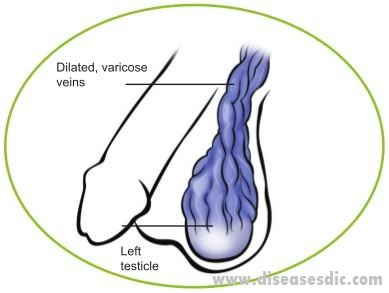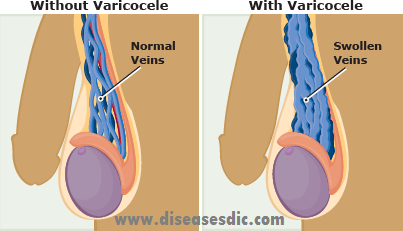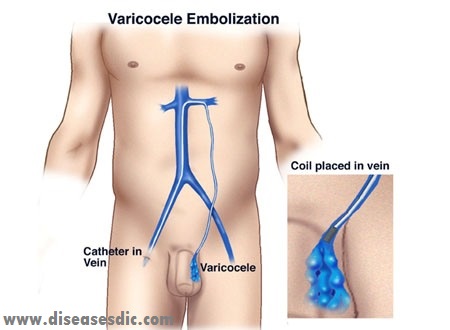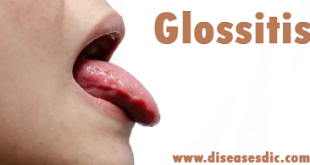Definition
A varicocele is the swelling in the scrotum caused by a collection of abnormally large blood vessels (veins) in the scrotum. This is due to dilatation of the testicular vein which drains the scrotum and testicle and is a form of varicose vein. They are often described as feeling like “a bag of worms”.

A varicocele occurs in approximately 1 in 8 men and it is usually first noticed between the ages of 12 to 28. The incidence is noted to be higher in infertile couples, often up to 30%. They usually occur on the left-hand side but can occur on both sides of the scrotum. They occur more frequently on the left side as a result of the differing anatomy of the veins from which varicoceles result on the left-hand side of the body compared to the right.
Usually, veins have a one-way valve that allows blood to flow from an organ to the heart and not the reverse. However, sometimes these valves fail and in this case, this results in blood pooling around the testicle in the scrotum due to gravity. This eventually leads to the veins enlarging and forming a varicocele.

Types of Varicocele
There are two types of varicocele based on how the dysfunctional veins affect the body. The key difference between the classifications is how the varicocele affects the internal and external iliac vein
Pressure Varicoceles lead to retrograde blood pooling of the internal spermatic vein resulting in the varicocele.
However, there is no varicocele to the internal or external iliac vein. This type of varicocele usually falls under the Grade I category.
Shunt Varicoceleshave a severe pooling of blood that results in a large varicocele forming where damaged veins expand to the internal or external iliac vein. This type of varicocele is typically under the Grades II and III categories.
Varicocele risk factors
Although most men with varicoceles are able to father children, and have no symptoms associated with this condition, many men can have effects from these dilated veins. These include:
- Testicular pain on the affected side
- Testicular atrophy, described as decrease in growth, or loss in size of the testicle on the effected side.
- Infertility can be caused by varicoceles, and this issue is typically diagnosed upon obtaining a semen analysis demonstrating abnormalities in sperm count, shape, and/or motility.
Causes of Varicocele
- One explanation for varicoceles is that the valves in the spermatic cords, which carry blood to and from the testicles, stop working correctly.
- Why this happens is not entirely clear, but it is similar to what happens when varicose veins occur in the leg.
- One-way valves in the veins should always allow blood to flow toward the heart. Faulty valves can disrupt the blood flow. The blood pools rather than moving smoothly on. This build-up of blood causes the vessels to dilate.
- As with any other organ, a disruption in blood flow can eventually stop it from working properly.
Symptoms
Pain: Aching pain when an individual has been standing or sitting for long periods of time and pressure builds up on the affected veins. Typically, painful varicoceles are prominent in size.
Fertility Problems: There is an association between varicoceles and infertility. The incidence of varicocele increases to 30 percent in infertile couples. Decreased sperm count, decreased motility of sperm, and an increase in the number of deformed sperm are related to varicoceles. Some experts believe that blocked and enlarged veins around the testes, called varicoceles, cause infertility by raising the temperature in the scrotum and decreasing sperm production.
Testicular Atrophy: Shrinking of the testicles is another sign of varicoceles. Often, once the testicle is repaired it will return to normal size.
Complications of Varicocele
Infertility is a complication of varicocele.
Complications from treatment may include:
- Atrophic testis
- Blood clot formation
- Infection
- Injury to the scrotum or nearby blood vessel
Diagnosis and test
Self-Diagnosis
Many boys and men know they have a varicocele because they can feel the mass of dilated veins in the scrotum. This feels like a sack of worms or spaghetti. These men have larger varicoceles.
They may also notice that the testicle is smaller on that side. Interestingly, the scrotum on the varicocele side may look larger, because there are so many veins there. However, when the testicle itself is felt, it is smaller than the one on the other side. They may also notice that they have discomfort in that testicle or side of the scrotum.
Physician’s Diagnosis
During a physical examination, a physician may diagnose a varicocele. It can most clearly be felt when a man is standing and again, it will feel like a bag of spaghetti. It may disappear when a man lies down (as the weight of the blood and the veins is no longer pushing down past the malfunctioning valves into the scrotum). In a standing position, the man may also be asked to bear down (like he is having a bowel movement). The physician may feel an impulse when the blood pushes backward (because of the increased pressure inside the abdomen) into the scrotum.
Sophisticated Testing
To confirm varicoceles, sophisticated tests are often used:
Doppler Stethoscope
A doppler stethoscope will amplify the sound of blood moving past it. At rest, only the pumping of the artery should be heard. The blood flow in the veins is so slow that no sound can be heard. When the patient pushes down, more blood flows backward into the scrotum and can be heard as a rushing sound.
Ultrasound
The duplex ultrasound is currently considered the best non-invasive way to identify or confirm the presence of varicoceles. The duplex ultrasound has two parts.
First, a thorough ultrasound of the testis is performed. The diameter of the veins can be measured. Other abnormalities may be identified. Almost one-third of men with infertility had an abnormal finding on the ultrasound that was not suspected during the physical examination.
The second part of the ultrasound evaluation measures the blood that flows past the probe when the patient pushes down. This blood flow confirms the varicocele. This blood flow can actually be both visualized in color and heard.
Treatment
Varicoceles usually require no treatment. However, if you’re infertile or your varicocele causes pain or testicular atrophy, you may want to undergo varicocele repair. Treatment is aimed at sealing off the affected vein to redirect the blood flow into normal veins.
Although varicoceles typically develop in adolescence, it’s less clear whether you should have varicocele repair at that time. Indications for repairing a varicocele in adolescence include progressive testicular atrophy, pain or abnormal semen analysis results.
Varicocele repair presents relatively few risks. Increased fluid around the testicles (hydrocele) occurs in a small percentage of cases. Recurrence of varicoceles is a risk, affecting perhaps one in 10 men who undergo repair. Repair methods include:
Microsurgical varicocelectomy: This highly skilled surgery is performed inguinal, meaning via the groin, or sublinguinal, meaning via a single incision that is about one inch above and to the side of the penis, and uses a microscope to aid in the repair. This surgical technique has the fewest risks and the shortest recovery time, making it the surgical treatment of choice.
Laparoscopic varicocelectomy: In this case, the repair is done via the abdomen. Because of the increased risk and longer recovery time, this is rarely chosen.
Percutaneous embolization treatment (also known as radiologic ablation): This is a nonsurgical technique with fewer risks and pain than either of the above surgical treatments. This treatment involves a radiologist injecting into the problem vein small coils or alcohol to block the vein causing the trouble. This treatment requires a radiologist knowledgeable in this technique, which may not be available in all areas. There’s some controversy over the long-term success rates of this treatment.

All of these treatments carry some degree of risk, with percutaneous embolization carrying the least risk and laparoscopic surgical repair carrying the greatest amount of risk. Be sure to discuss with your doctor all your treatment possibilities, including complete information on risks, success rates, and recovery times.
Natural methods to cure varicocele
Going for surgery isn’t the only option for men who suffer from varicocele. Some home remedies include:
- Consuming herbs like horse chestnut, Alstonia and mukkuti
- Avoiding alcohol
- Consuming foods with high fiber content
- Vitamin C and Vitamin E supplements
It is always a joy to have children and start a family. But for some couples, it just seems like an impossible option. Infertility is an issue that has created many problems for couples emotionally and mentally.
 Diseases Treatments Dictionary This is complete solution to read all diseases treatments Which covers Prevention, Causes, Symptoms, Medical Terms, Drugs, Prescription, Natural Remedies with cures and Treatments. Most of the common diseases were listed in names, split with categories.
Diseases Treatments Dictionary This is complete solution to read all diseases treatments Which covers Prevention, Causes, Symptoms, Medical Terms, Drugs, Prescription, Natural Remedies with cures and Treatments. Most of the common diseases were listed in names, split with categories.








is there any common tablets which we can use apart from those mentioned
You can consult a doctor for an appropriate prescription of tablets.
Doctor am asking even manstabation can led to this infection too.
Safe and Hygenic practice of Sexual activities can’t affect with Varicocele.
Doctor should this cause pain while having sex?
If a man is suffering from a varicocele the amount of, or mobility of the sperm ejaculated may be impacted, resulting in varicocele related infertility. It may cause mild to moderate pain after having sex.
How effective is the home remedy and are there side effects of the home remedy?
Home remedies are just to ease the pain due to varicocele. It does not create any side effects as it does not use any pain relieving drugs.
Doctor am one of this disease what treatment can I have? because I’m turning 38yrs.
There are no drugs to treat or prevent varicoceles. But pain killers (such as acetaminophen or ibuprofen) may help with pain. When needed, surgery is the main form of treatment.
Note: Kindly consult a doctor for appropriate diagnosis and treatment.
What I want to know is ,if this ailment varicocele is not cured in time, can it lead to death of infected person?
If untreated it may cause atrophy (shrinkage) of the testicles.